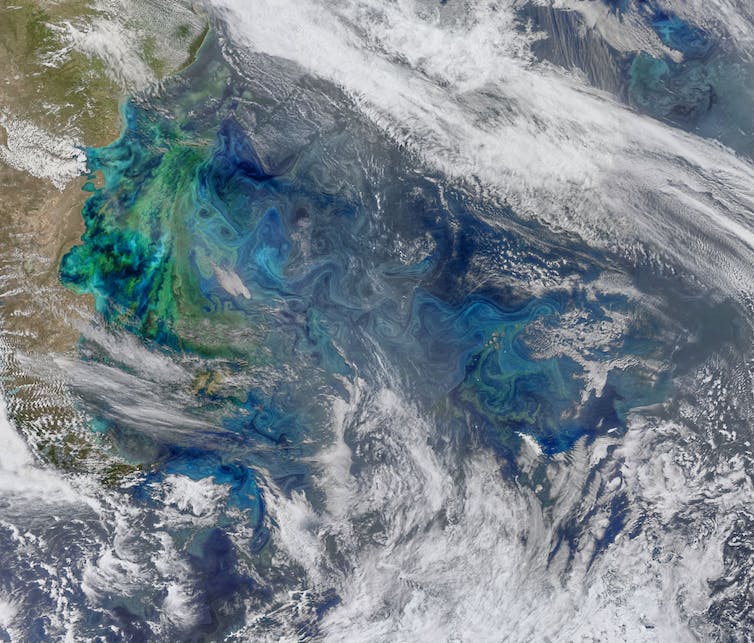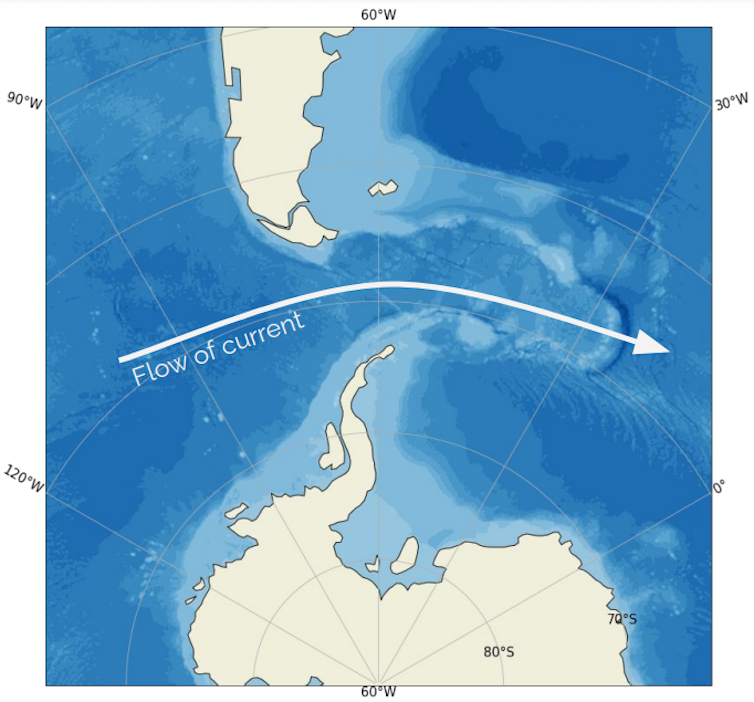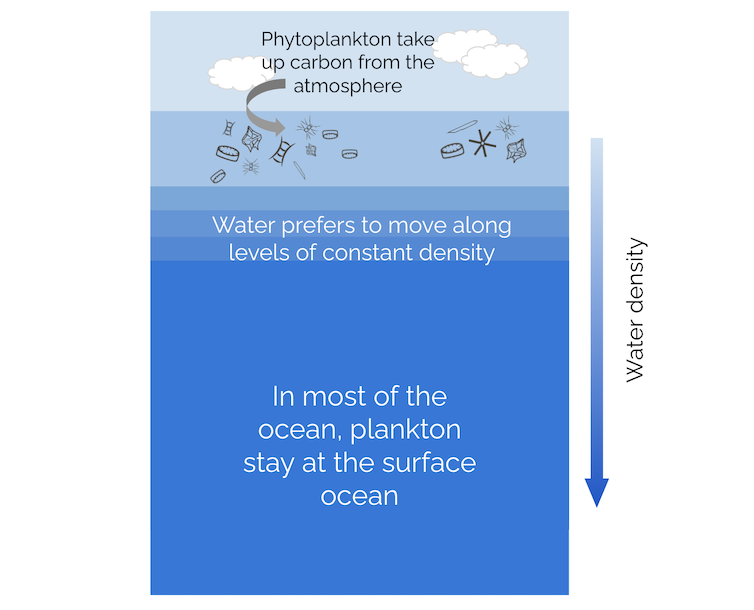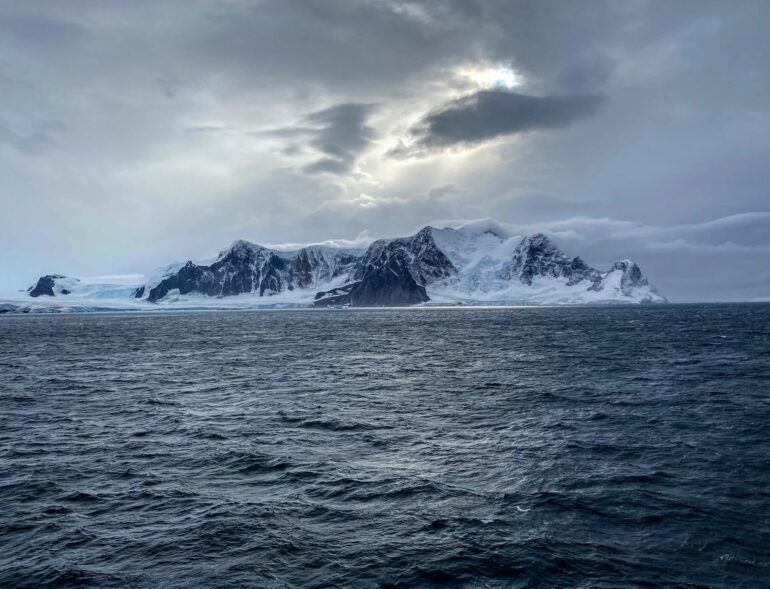Looking out across the Southern Ocean near Antarctica, I can see whales and seabirds diving in and out of the water as they feed on sea life in the lower levels of the food web. At the base of this food web are tiny phytoplankton – algae that grow at the ocean surface, taking up carbon from the atmosphere through photosynthesis, just as plants on land do.
Because of their small size, phytoplankton are at the mercy of the ocean’s swirling motions. They are also so abundant that the green swirls are often visible from space.
Typically, phytoplankton remain near the surface of the ocean. Some may slowly sink to depth because of gravity. But in the turbulent Drake Passage, a 520-mile-wide (850 km) bottleneck between Antarctica and South America, something unusual is happening, and it has an impact on how the ocean takes carbon dioxide – the main driver of global warming – out of the atmosphere.

A satellite image captures a green phytoplankton bloom off the coast of Argentina. The Drake Passage is at the country’s southern end.
NASA Aqua/MODIS
The Drake Passage
The Drake Passage is notorious for its violent seas, with waves that can top 40 feet (12 meters) and powerful converging currents, some flowing as fast as 150 million cubic meters per second. Cold water from the Southern Ocean and warmer water from the north collide here, spinning off powerful and energetic eddies.
New scientific research I am involved in as an oceanographer now shows how the Drake Passage and a few other specific areas of the Southern Ocean play an outsize role in how the oceans lock up carbon from the atmosphere.

A topographic map of the Drake Passage between South America and Antarctica.
NCEI/NOAA
That process is crucial for our understanding of the climate. The global ocean is a massive reservoir of carbon, holding over 50 times as much carbon as the atmosphere. However, it is only when water carrying carbon gets to the deep ocean that carbon can be stored for long periods – up to centuries or millennia.
Photosynthetic phytoplankton are at the heart of that exchange. And in the Drake Passage, my colleagues and I have found that undersea mountains are stirring things up.
The role of ocean layers
The ocean can be visualized as having layers. With constant surface waves and winds, the upper layer is always stirring around, mixing waters. It’s like mixing milk into your morning coffee. This stirring mixes in solar heat and gases, such as carbon dioxide, taken up from the atmosphere.
Water density generally increases as the waters get deeper and colder and saltier. That forms density layers that are typically flat. Since water prefers to keep its density constant, it mostly moves horizontally and doesn’t easily move between the surface and deep ocean.




